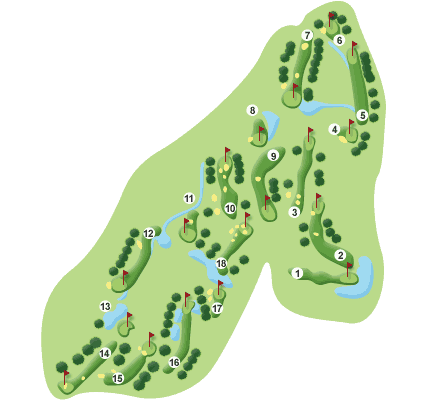Flora
Fauna
Endangered

Allium
(Allium vineale)
Allium is the onion genus, with about 1250 species, usually classified in its own family Alliaceae. Some botanists used to classify it in the lily family (Liliaceae).
They are perennial bulbous plants. They occur in temperate climates of the northern hemisphere, except for a few species occurring in Chile (as Allium juncifolium), Brazil (Allium sellovianum) or tropical Africa (Allium spathaceum). They can vary in height between 5 cm and 150 cm. The flowers form an umbel at the top of a leafle... [more]
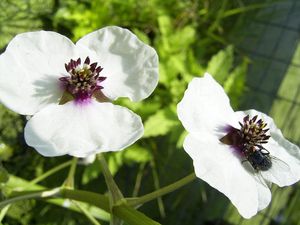
Arrowhead
(Sagittaria sagittifolia)
Sagittaria sagittifolia (also called arrowhead due to the shape of its leaves) is a flowering plant in the family Alismataceae, native to wetlands throughout the temperate regions of Europe and Asia.
It is a herbaceous perennial plant, growing in water from 10-50 cm deep. The leaves above water are arrowhead-shaped, the leaf blade 15-25 cm long and 10-22 cm broad, on a long petiole holding the leaf up to 45 cm above water level. The plant also has narrow linear submerged leaves, up to 80 cm l... [more]
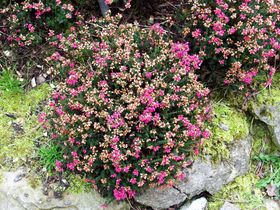
Bell Heather
(Erica cinerea)
Erica cinerea (Bell Heather) is a species of heather, native to western and central Europe. It is a low shrub growing to 15-60 cm tall, with fine needle-like leaves 4-8 mm long arranged in whorls of three. The flowers are bell-shaped, purple (rarely white), 4-7 mm long, produced in mid to late summer.
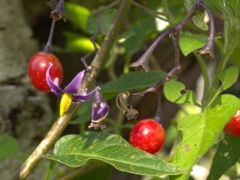
Bittersweet
(Solanum dulcamara)
Bittersweet (Solanum dulcamara) is a species of vine in the potato genus Solanum, family Solanaceae. It is native to Europe and Asia, and widely naturalised elsewhere, including North America, where it is an invasive problem weed. It occurs in a very wide range of habitats, from woodlands to scrubland, hedges and marshes.
PlantBittersweet is a semi-woody herbaceous perennial vine, which scrambles over other plants, capable of reaching a height of 4 m where suitable support is available, but m... [more]
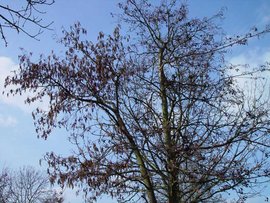
Black Alder
(Alnus glutinosa)
Black Alder (Alnus glutinosa) is an alder tree native to most of Europe, including all of Britain, and locally in southwest Asia.
The Black Alder thrives best in moist soils, and grows under favourable circumstances to a height of 20-30 m, though often less. It is characterized by its 5–10 cm short-stalked rounded leaves 6–12 cm long, becoming wedge-shaped at the base and with a slightly toothed margin. When young they are somewhat glutinous, whence the specific name, becoming later a glo... [more]
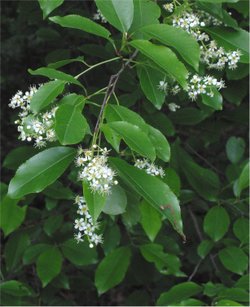
Black Cherry
(Prunus serotina)
The Black Cherry (Prunus serotina) is a species of cherry, native to eastern North America from southern Quebec and Ontario south to Texas and central Florida. It is a species in the subgenus Padus with flowers in racemes, and is a deciduous tree growing to 15-30 m tall.
Black Cherry barkThe leaves are simple, 6-14 cm long, with a serrated margin. The fruit are 1 cm in diameter, somewhat astringent and bitter to eat fresh, but suitable for making jam and cherry pies; they are also readily eat... [more]
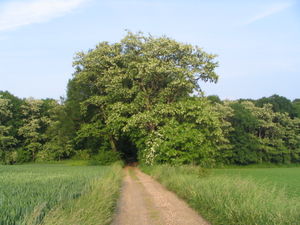
Black Locust
(Robinia pseudoacacia)
... [more]
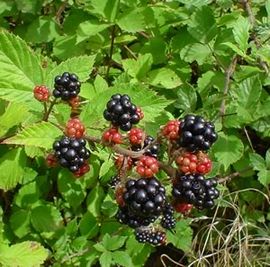
Blackberries
(Rubus fruticosus)
The blackberries (singular, blackberry; genus Rubus, subgenus Eubatus; also called bramble or occasionally "bramble raspberry") are a widespread and well known group of several hundred closely related apomictic microspecies, native throughout the temperate Northern Hemisphere.
Blackberry bush in late June in UKThey are perennial plants which typically bear biennial stems ("canes") from the perennial root system. In its first year, a new stem grows vigorously to its full length of 3-6 m, archi... [more]
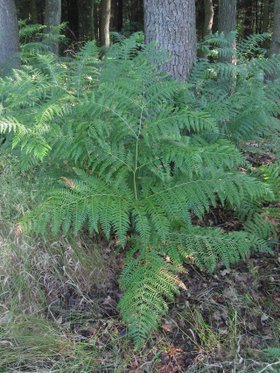
Brackens
(Pteridium aquilinum)
Brackens (Pteridium) are a genus of about ten species of large, coarse ferns, in the family Hypolepidaceae. The genus has probably the widest distribution of any fern genus in the world, being found on all continents except Antarctica and in all environments except for hot and cold deserts. Therefore it is considered to have a cosmopolitan distribution. In the past, the genus was commonly treated as having only one species, Pteridium aquilinum, but the recent trend is to subdivide it into severa... [more]
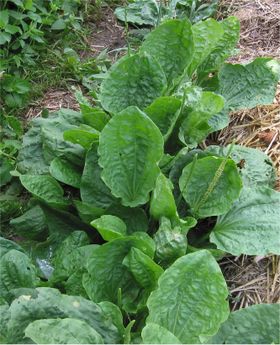
Broadleaf
(Plantago major subsp. major)
The Broadleaf Plantain or Greater Plantago (Plantago major) is a member of the plantago family, Plantaginaceae. In North America, this plant is primarily a weed, though it is edible and is used in herbal medicine. The plant is native to Europe, and is believed to be one of the first plants to naturalize in the colonies.
This plant does best in compacted soils, and hence is sometimes called "roadweed". It propagates primarily by seeds, which are held on the long, narrow spikes which rise well ... [more]

Alpine Newt
(Mesotriton alpestris)
The Alpine Newt (Triturus alpestris) belongs to the order Salamander (Urodela or Caudata) in the class of Amphibians. The alpine newt is one of five newts in Germany.
Description
During the mating season early in the year, the males exhibit blue colouring on their backs; their flanks are stippled black and white, and on the belly are marked with a blue stripe. The shallow crest is alternately spotted yellow and black. The females, in water camouflage, are mottle grey-brown-green and have som... [more]

American Bull Frog
(Rana catesbeiana)
The American Bull Frog (Rana catesbeiana) is an aquatic amphibian, a member of the family Ranidae, or "true frogs", native to much of North America.
Description
Bull frogs are large frogs, they can grow to a body length of 6 inches (15 cm) with a weight of 1.5 lb (750 g). Females are typically larger than males. They are generally varying shades of green or brown, with dark brown, dark green, or black blotching and a yellow or white underside.
A bullfrog uses skin, Buccal Cavity, and lung... [more]

Barheaded goose
(Anser indicus)
The Bar-headed Goose (Anser indicus) is a goose which breeds in Central Asia in colonies of thousands near mountain lakes. It lays 3-8 eggs in a ground nest.
The preferred summer habitat is high altitude lakes where the bird grazes on short grass. It suffers predation from crows, foxes, kites, ravens, sea eagles and others. The total population may, however, be increasing.
The Bar-headed Goose migrates over the Himalayas to spend the winter in India, Assam, Northern Burma and the wetlands ... [more]

Bearded Tit
(Panurus biarmicus)
The Bearded Tit is a small passerine bird. It is also frequently known as the Bearded Reedling, since it is a member of the parrotbill family of birds rather than a true tit in the family Paridae.
Although the parrotbills and their relatives, the Old World babblers are otherwise confined to warm climates, the Bearded Tit is a species of temperate Europe and Asia. It is resident, and most birds do not migrate other than eruptive or cold weather movements. It is vulnerable to hard winters, whic... [more]
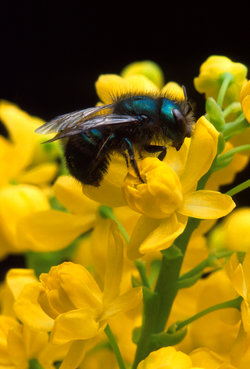
Bees
(Apiformes)
Bees (Apoidea superfamily) are flying insects, closely related to wasps and ants. There are approximately 20,000 species of bees, and they may be found on every continent except Antarctica. Bees are adapted for feeding on nectar and pollen, the former primarily as an energy source, and the latter primarily for protein and other nutrients. Most pollen is used for food for the brood.
Bees have a long proboscis that enables them to obtain the nectar from flowers. Bees have antennae made up of th... [more]
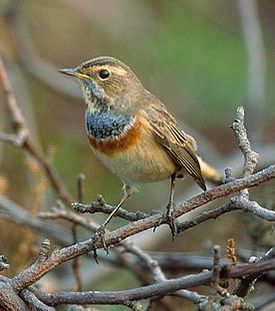
Bluethroat
(Luscinia svecica)
The Bluethroat (Luscinia svecica), is a small passerine bird that was formerly classed as a member of the thrush family Turdidae, but is now more generally considered to be an Old World flycatcher, Muscicapidae. It, and similar small European species, are often called chats.
At Keoladeo National Park, Bharatpur, Rajasthan, India.
Red-spotted raceIt is a migratory insectivorous species breeding in wet birch wood or bushy swamp in Europe and Asia with a foothold in western Alaska. It nests i... [more]
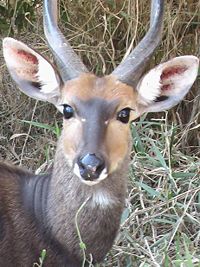
Bushbuck
(Tragelaphus scriptus)
The Bushbuck (Tragelaphus scriptus) is an antelope that is found in forest and woodland throughout Sub-Saharan Africa. Also called \"bush antelope\", this is used occasionally for any relativers with which it shares its habitat.Bushbuck stand about 90 centimetres at the shoulder and weigh from 30 to 80 kilograms (depending on sex). Bushbuck have a light brown coat, with up to seven white stripes and white splotches on the sides. The muzzle is also white. Horns are found only on the males and the... [more]
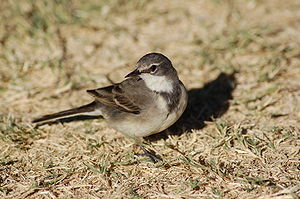
Cape Wagtail
(Motacilla capensis)
The Cape Wagtail (Motacilla capensis) is a small passerine bird in the family Motacillidae, which includes the wagtails, pipits and longclaws.
This species breeds in much of Africa from eastern Zaire and Angola across to Kenya and south to the Cape in South Africa. This is an insectivorous bird of open country, often near habitation and water. It prefers bare areas or short grass for feeding, where it can see and pursue its prey. In urban areas it has adapted to foraging in gardens or paved are... [more]
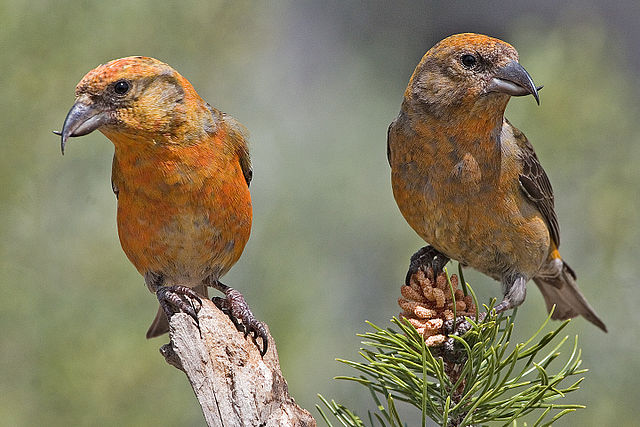
Common Crossbill
(Loxia curvirostra)
The Common Crossbill (Loxia curvirostra) is a small passerine bird in the finch family Fringillidae. It breeds in the spruce forests of North America, where it is known as Red Crossbill, as well as Europe and Asia; some populations (possibly different species) breed in pine forests in certain areas of all three continents, and in North America, also in Douglas-fir. It nests in conifers, laying 3–5 eggs.
This crossbill is mainly resident, but will regularly irrupt south if its food source fail... [more]
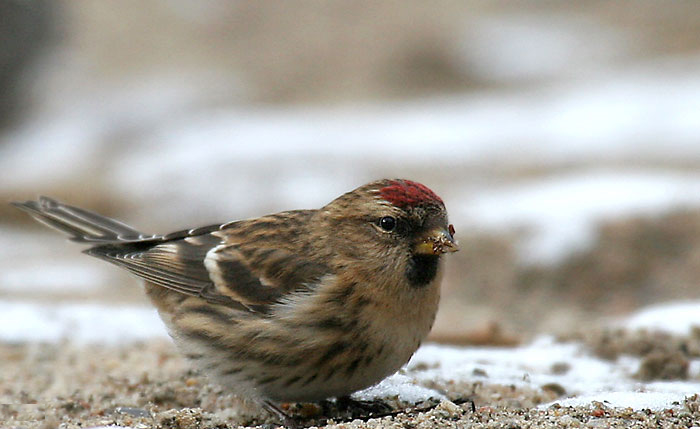
Common Redpoll
(Carduelis flammea)
The Common Redpoll, Carduelis flammea, is a species in the finch family. It breeds somewhat further south than the Arctic Redpoll, also in habitats with thickets or shrubs. Nominate C. f. flammea (Mealy Redpoll) breeds across the northern parts of North America and Eurasia. There is also an Icelandic subspecies, C. f. islandica, and one which breeds in Greenland and Baffin Island, C. f. rostrata. All forms migrate further south in winter into southern Canada, the northern USA and most of Eurasia... [more]
